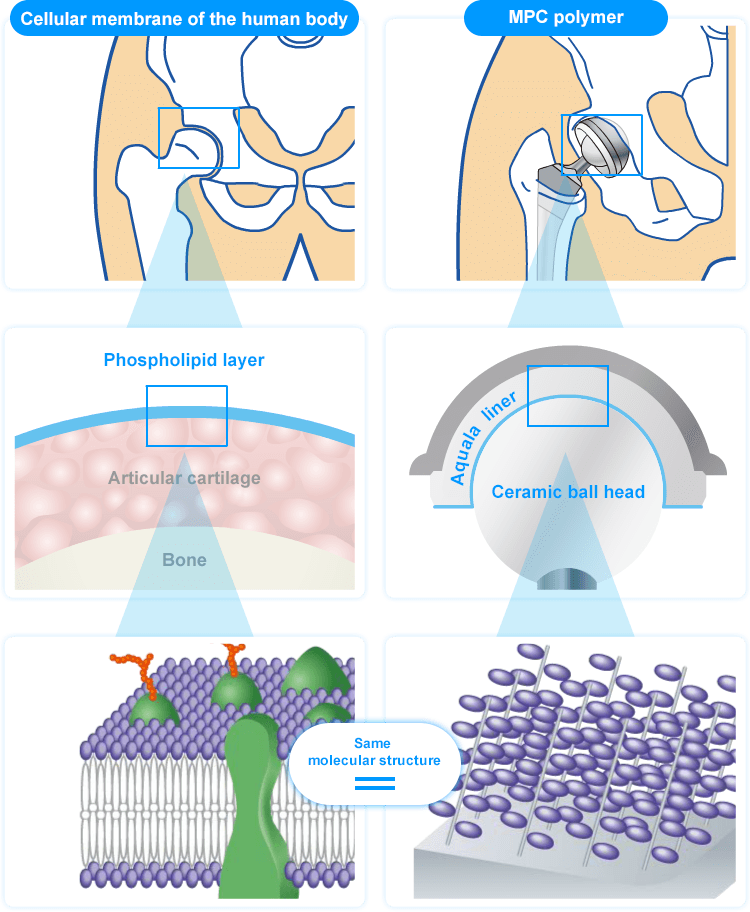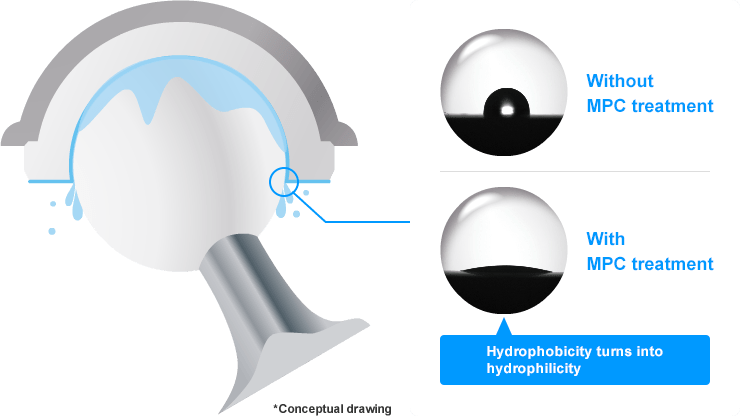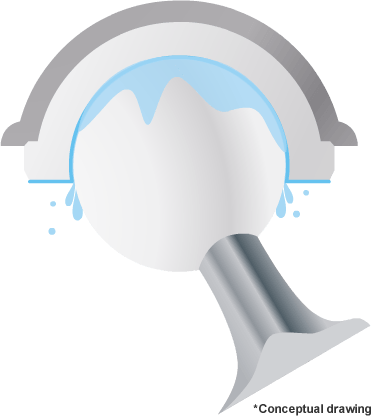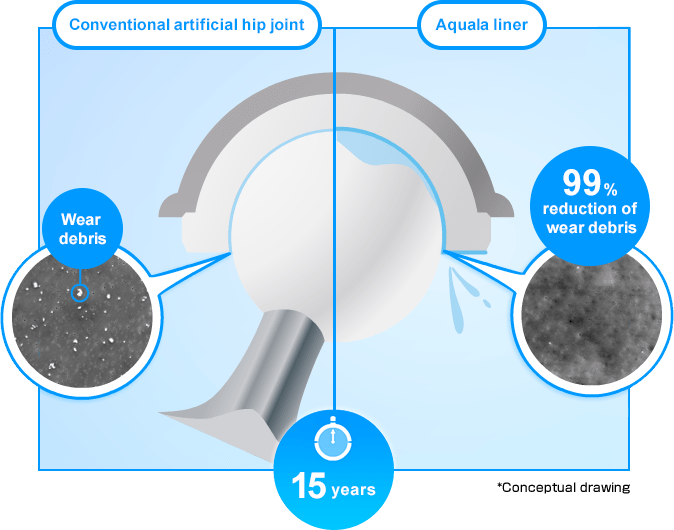- Home
- Products
- Orthopedic and Dental Products
- Technology
- Features of Aquala
Aquala
Focusing on Materials Compatible with the Human Body
MPC polymer material
This material has the same “phospholipid structure” as that of the cellular membrane of the human body and is highly hydrophilic and biocompatible.
In other words, it does not induce any adverse reactions, such as blood coagulation, when inside the body.
Thanks to the suitability of this material for the human body it has previously been used in artificial hearts and contact lenses, among other applications, and we are the first in the world to apply this material successfully to artificial hip joints.

Biomimetic technology
Reproduction of the Cellular Membrane!
Reproduction of the cellular membrane based on the articular cartilage
The liner of an artificial hip joint treated with MPC polymer provides “synthetic phospholipids” that are very similar to the surface of human cartilage (MPC polymer-treated liner will be hereinafter be referred to as “Aquala Liner”).
This is composed of constituents that are very similar to those of the human body and therefore are expected to function stably inside the body to reproduce the cellular membrane.

Strong Affinity for Water in the Body!
MPC polymer treatment enables high hydrophilic properties, that is, a strong affinity for water.
Following MPC treatment, a liner is turned from a “hydrophobic” which repels water to a “hydrophilic” which has a strong affinity for water and forms a thin layer of water in the bodily fluids.

Smoother Motion!
MPC polymer treatment, which readily holds water,
provides a highly lubricating articular surface.
MPC polymer treatment, which has a strong affinity for water, makes the motion of the joints very smooth.
This is due to a mechanism by which the two friction surfaces are separated by water, leading to a substantial decrease in the coefficient of friction.
High lubricating property substantially decreases the coefficient of friction!

![]()
Comparative video of MPC treatment
Left: Liner without MPC treatment
Right: Aquala liner
Experiments in our company.
Reference:Moro T, Takatori Y,Ishihara K, Konno T,Takigawa Y, Matsushita T, Chung UI, Nakamura K, Kawaguchi H.
Surface grafting of artificial joints with a biocompatible polymer for preventing periprosthetic osteolysis. Nat Mater. 3(11), 829-36,2004.
Wear Also Substantially Reduced!
Wear is also substantially reduced by the water separating the two articular surfaces, preventing them from coming into direct contact with one another.

- Friction is reduced to 1/10 compared to non-MPC treatment.
- In addition, an experiment replicating the walking of 5,500 steps/day for 15 years (using an artificial hip joint simulator) indicated that wear debris was reduced by 99% compared with non-treated products.
Based on the results of our hip prosthesis simulator.
This graph presents the results of an experiment using a walking test machine to simulate artificial hip joint wear. After walking for a period equivalent to 15 years, a conventional liner without MPC treatment wears down, with its weight decreased, but the liner with MPC treatment remained intact (it absorbs water causing increased weight).

Based on the results of our hip prosthesis simulator.
Aquala is…
The Japanese technology expected to mark a new era for prolonging the life of artificial hip joints.


